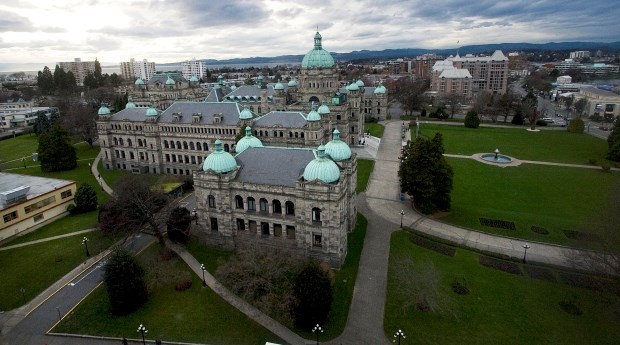 Premier Christy Clark went in for the traditional visit with the lieutenant-governor that triggers the election call with a big financial edge over the NDP and the Greens. One of the lessons to be learned on May 9 is how much of a difference that makes when it comes time to vote.
Premier Christy Clark went in for the traditional visit with the lieutenant-governor that triggers the election call with a big financial edge over the NDP and the Greens. One of the lessons to be learned on May 9 is how much of a difference that makes when it comes time to vote.
The big-money issue that has dogged Clark and the B.C. Liberals for the past year or more won’t likely be the deciding issue. There are too many other things in play. And as of Tuesday, all the parties and candidates have the same spending limits.
So regardless of how much more money the Liberals raised — $13.1 million to the NDP’s $6.2 million in donations — they can only spend so much of it over the 28-day campaign.
In 2013, the total campaign spending, some outside the limit period, was much closer than the fundraising was. Liberals listed $11.7 million in spending, to the NDP’s $9.4 million.
The limits for the 2017 campaign were published a few hours after the election was called, as they are adjusted for inflation at the start of every campaign. Parties can spend up to $4.9 million in the next month. Candidates can spend $77,674, which amounts to $6.7 million for a party with a full slate of 87 candidates.
Where the financial edge shows is in the year-round operations of the parties outside the campaign period. The disclosure statements filed to Elections B.C. by all parties and recently released show the Liberals, after four terms in power, run a much bigger, more elaborate political enterprise that scarcely has to worry about borrowing money to fund a campaign.
Both the Liberals and the NDP list the same amount on their expense sheets for salaries and benefits — $2.2 million. But Liberals spent more than twice as much as the NDP — $12.2 million to $5.2 million — on day-to-day operations in 2016.
And they are sitting on $7 million worth of assets held as bonds, stocks and other investments. The NDP lists $508,000 worth.
Last year, the Liberals spent $849,000 on professional services and $958,000 on research and polling. The NDP listed $274,000 and $44,000 in expenses in those categories.
Liberals spent $1.1 million on advertising, compared with the NDP’s $42,000. Liberals spent more than a half-million dollars on “social functions, thank-you parties.” The NDP lists $246 in that category.
Another critical difference is in the cost of the fundraising. None of the parties can afford to sit back and watch the cash roll in; they have to go out and drum up the donations. Liberals spent far more on fundraising functions, $2.2 million last year, than the NDP did — $319,000.
The source of all that money was a subject of continuing controversy, since almost half the Liberals’ take came from corporations, and $1.7 million of the NDP’s funds came from unions. But that argument is familiar to most who follow politics.
The Liberals say the lack of restrictions on fundraising saves taxpayers from having to fund parties they might or might not support personally. Clark has pledged an independent review of the rules.
The NDP says restrictions are needed and it will make them if it wins, but maintains it has to play by the rules as they exist. So it kept accepting money from unions and, to a lesser extent, corporations.
B.C. Greens, who are millions of dollars behind the major parties, support restrictions, and voluntarily started refusing corporate and union donations last fall.
Everyone is now poised to start spending the money in a big way, which will lessen the focus on fundraising. What they’re doing with the money will get more attention than where the money came from. The campaigns will ride off in all directions pursuing voters.
The big-money edge has allowed the Liberals to build a bigger entity to gather support. But it takes more than money to swing people’s votes. If money were the driving factor, the turnout would be a lot better than the current miserable 55 per cent.
Ideas, feelings and impressions hold sway from now until May 9.



